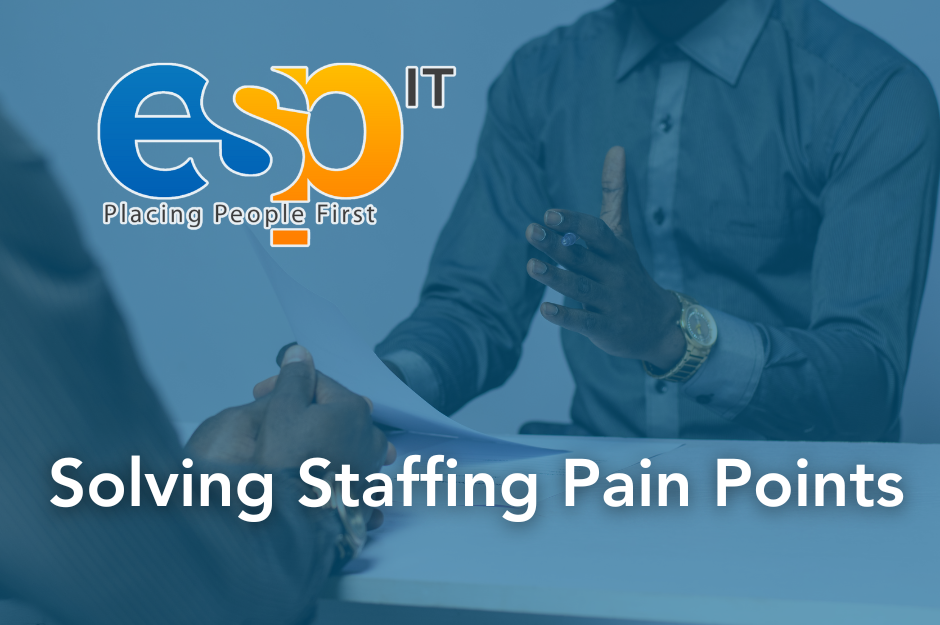Has a lack of activity on your LinkedIn profile page left you asking the question made famous by the 80’s hit song: “Don’t You Want Me?” Some wisdom from the ESP IT recruiting team in this second blog of our three-part LinkedIn Tips series will tell you how the middle of your LinkedIn page—the “experience” section—could be negatively impacting your professional image. While the opportunity to include as much IT work-history as desired can be an advantage for more seasoned IT pros, when used incorrectly the experience section may be holding you back. You won’t “be sorry” that you checked out our tips for cleaning up this tricky section.
An Update to Your Resume Means an Update to Your LinkedIn Profile
“LinkedIn is today’s resume. If I see anything on someone’s LinkedIn page that I wouldn’t want to see on a resume, it would make me pass them up. Likewise, anything I look for on a resume I look for on LinkedIn.”
Because IT recruiters view LinkedIn as a resume, they expect you to closely monitor and update the experience section. You wouldn’t bring an old resume to an interview, so watch out for outdated information on your LinkedIn profile.
1. Don’t Forget to Organize
Updating your information means ensuring that your work history is listed in chronological order or order of significance. While it may be easy for users to forget to update a virtual platform, it’s imperative that IT professionals do not miss this crucial step.
“We are looking for a well-thought out and planned LinkedIn profile that gives us the most important, relevant information first.”
Especially in the IT consulting field, where a candidate may have been a part of a variety of different projects, a LinkedIn experience section that has not been organized can be difficult for recruiters to follow. Again, remember the rules of a printed resume. On average, IT recruiters and hiring managers spend only six seconds looking at a resume, which means you’ll want the most important information to be easily accessible, or you may be passed up.
2. Avoid Sporadic Work History
“If I see a five-year-gap between experiences listed, and the IT consultant does not offer an explanation for the gap on his or her profile, I will consider it a big negative.”
There is always a reason for a gap in employment. Whether the reason is one you want to share or not is up to you, however IT recruiters frequently look on unexplained gaps with skepticism. Explain any gaps both in your experience section and in your summary. If you don’t have a gap, be on the alert – leaving out parts of your work history or forgetting to make updates to your experience section just might have you landing in the “unexplained gap” category.
Don’t Skimp on the Details
ESP IT recruiters all agree: the more detail, the better.
“I’ll say no to IT consultants right away if they don’t include any experience detail. If they just list the company, or only include one line of a job description, I don’t have anything to help me decide whether I’m going to call them.”
1. Use Your Experience to Get Found
Not only can lack of detail prevent recruiters from calling you, it could actually be preventing recruiters from finding you, as they frequently use keywords to search for qualified candidates.
“It is beneficial to list some of the key words and descriptors for the ‘core duties’ of past IT roles. It may even be advantageous to list keywords for roles you want to work in the future. On that same note, including any alternative job titles, or titles which may be more commonly used to describe a position, will help your profile to come up in searches.”
Be strategic about the words you use to describe your work at a previous or current contract or IT job, and use key skills and words frequently to ensure your profile comes up easily in searches.
2. Detail Ensures a Right Fit
Including all of these specifics, ultimately, will benefit you, and save you time.
“If you can delve into a little bit deeper detail it might disqualify you for some jobs, but ultimately that will save you from getting a thousand calls from recruiters, while simultaneously qualifying you for those ten calls or so about opportunities that you are a great fit for.
Adding a little bit of extra info will simplify the recruitment process for all parties. This simplification will lead you to receiving InMails or phones calls for more, well-suited opportunities, much faster. What more could an IT pro ask for?
If you’re “not believing it” when IT recruiters don’t reach out to you, it might be time to reevaluate your professional profile, starting (not ending) with your LinkedIn experience page. It’s not “much too late to find” that you are in need of a virtual professional makeover. By taking advantage of these tips, and especially focusing on opportunities to include keywords in your job descriptions, recruiters are sure to approach you with a great fit in no time.
If you haven’t already, read the rest of this three-part series for tips on how to create a positive first impression on LinkedIn and optimizing your skills, recommendations, and endorsements on LinkedIn. And check back to learn what you can do with the bottom of your LinkedIn page to get noticed.



